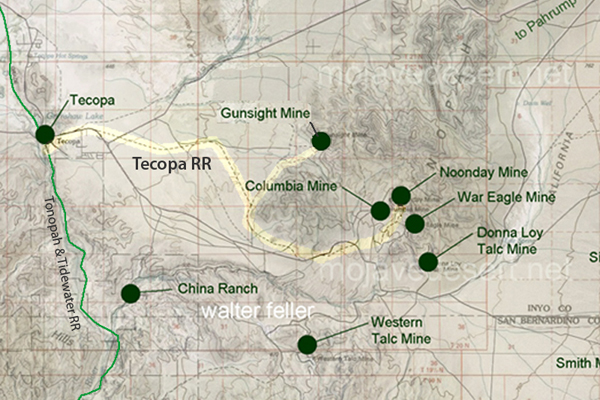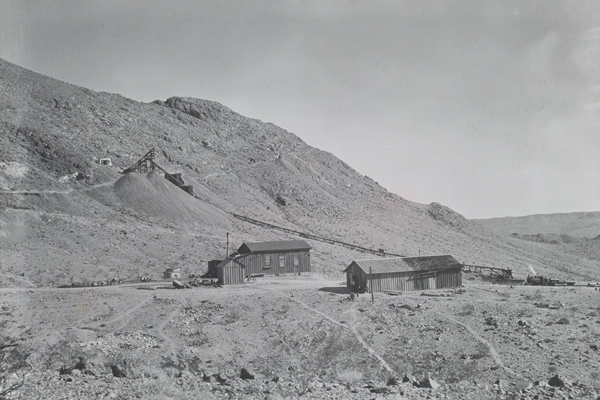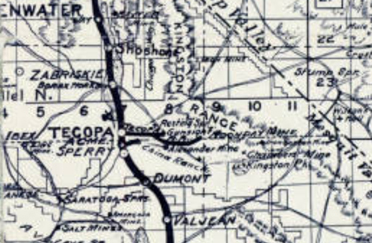Tecopa Railroad

Tecopa Railroad at Noonday Mine
The Tecopa Railroad was a standard-gauge mining railroad in the Mojave Desert, built to transport ore from the Tecopa area to the T&T Railroad for transfer to a processing facility. It was primarily associated with the mining operations of the Pacific Coast Borax Company, which had extensive holdings in the region.
 ----
----The Tecopa Railroad, completed in 1910, was a standard-gauge line built by Jack Osborne and his associates to haul ore from the Noonday and Gunsight mines westward to connect with the Tonopah & Tidewater Railroad near Tecopa. The connection was made at Tecopa siding, where the short-line railroad joined the T&T mainline.
Although Osborne's line relied on the T&T for long-distance shipping, he controlled the local rail segment from mine to mainline. This gave him leverage over regional freight operations and allowed him to serve local miners without fully depending on Borax Smith's rates or oversight.
Borax Smith, who built and controlled the T&T to support his borax empire, saw Osborne’s independent operation as a threat. While not a full-blown railroad war, there was tension between the two men over freight traffic and control of the Amargosa corridor.
As ore production declined in the late 1910s, the Tecopa Railroad became less profitable. It was eventually dismantled in 1938. Smith’s T&T survived a bit longer but was fully abandoned by the early 1940s. The competition between Osborne and Smith reflected a broader struggle for control of desert transportation during the mining boom years.
The railroad ran from Noonday Camp, a small mining town near the southern end of Death Valley, to the Tonopah and Tidewater Railroad (T&T), a standard-gauge line that connected the remote desert mining districts with the rest of the country. The T&T was built by Francis Marion Smith, the "Borax King," in the early 1900s to support borax and other mineral extraction.
The Tecopa Railroad efficiently moved ore across the rugged desert, but like many mining railroads, it operated for only a short time.
Once the Noonday and War Eagle Mines began to decline in productivity, the railroad's usefulness diminished. By 1930, operations ceased. At the same time, improvements in road transportation-particularly the rise of trucks capable of handling rough desert routes made short-haul mining railroads like this one obsolete.

